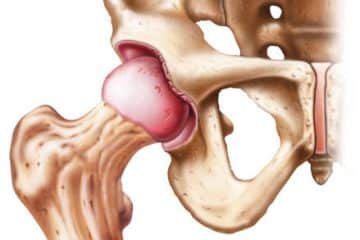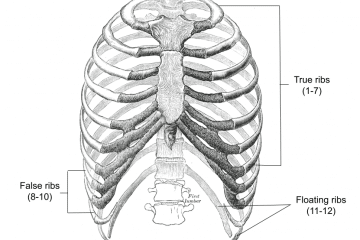Limb Sparing Surgery – Overview
Limb sparing surgery, also known a limb-saving or limb-salvage is a surgical procedure to save a limb that is at high risk of amputation.
Limb sparing surgery may be required due to medical conditions such as bone cancer, diabetes, vascular disease and trauma.
There are many different types of limb-sparing techniques, including arthrodesis, arthroplasty, alloprosthetic composite, endoprosthetic reconstruction, prosthetic implants, and rotationplasty.

Reasons for Limb Sparing Surgery
There are many different medical conditions that can result in the need for limb sparing surgery. These may include:
Bone Cancer
Most primary bone cancers are in the arms or legs. Limb sparing surgery is the main operation for these cancers. This means removing the cancer without removing the affected arm or leg.
The surgeon removes the area of bone containing the cancer and may replace it with a:
- metal implant called a prosthesis
- replacement bone either from another part of the body or from a bone bank
In some cases the affected bone is taken out, treated with radiotherapy and then put back into the body.
Diabetic Neuropathy
Neuropathy, particularly diabetic neuropathy (nerve damage caused by diabetes), often leads to the need for amputation of a limb. With timely intervention, limb sparing surgery may provide an alternative to amputation.
Peripheral Artery Disease (PAD)
Peripheral artery disease (PAD) causes a reduction in blood flow to the limbs, usually occurring in the legs. The reduced blood flow caused by PAD can progress to a condition called critical limb ischemia (CLI), which can result in poor wound healing and severe pain in the leg or foot which may lead to gangrene.
More: Knee Replacement Surgery
Limb Sparing Techniques
There are different types of limb-salvage techniques, depending on the underlying cause of the potential loss of a limb, the severity of the causative condition, and other factors. These include:
Arthrodesis
Arthrodesis is defined as, “the surgical immobilization of a joint so that the bones grow solidly together.” Arthrodesis can relieve pain from arthritis and fractures. This is accomplished through the use of Allografts and Autografts.
Allografts are done by creating bone grafts from a donor bone bank, while autografts are bone grafts from other bones in a patient’s body.
Synthetic bones and metal plates can also be inserted to abate the pain.
Arthroplasty
Arthroplasty is very similar to arthrodesis. It literally means “surgical repair of joint.’ In the past, arthroplasty used tissue and removal of bone to relieve pain. Currently, joints are removed and replaced with prosthetic limbs. This alleviates pain, allows a greater range of motion, and improves walking ability, all of which strengthen muscles.
Arthroplasty of the shoulder is one of the most common of these procedures, though it has only been widely used since 1955. Themistocles Gluck is thought to have created the first shoulder arthroplasty in the 1800s.
Since Gluck never published any results or notes on the procedure, Jules Emile Pean is credited with performing the first shoulder arthroplasty in 1893.
Rotationplasty
Rotationplasty, more commonly known as Van-Nes or Borggreve Rotation, is a limb-sparing medical procedure performed when a patient’s leg is amputated at the knee. The ankle joint is then rotated 180 degrees and is attached to the former knee joint, becoming a new knee joint. This allows patients to have two fully functional feet, as opposed to losing one leg completely to amputation.
Prosthetic implants
Prosthetic implants are used when sections of bone must be replaced and no further growth is expected. Implants are mostly made from metals but the possibility of using ceramic material has been discussed among surgeons.
Prosthetics can be temporary or permanent. Temporary implants remain in place until the bone has healed and are then removed. The temporary implants take most of the burden off of the fracture, causing the bone to become less dense. This can lead to the re-fracturing of the bone after the implant is removed. The implants can also cause stress concentrations as a result of the material difference between the bone and the plate.
With the permanent prostheses, a putty like substance is injected into the implant site to keep the body, mainly the immune system, from fighting off the implant. This substance can deteriorate bony tissue and cause serious bone problems for the patient. Prosthetic limbs have been used for many years. There is evidence that prosthetic limbs were made even back to Ancient Egypt.
Prosthetic limbs have been used ever since, though the materials have been updated from the early leather and wood to sturdy metals.
Limb Sparing Surgery Risks and Complications
As with any surgical procedure, limb-salvage surgery comes with its own risk of complications. These include:
Infection
Infection is a risk with any bone surgery. It is a particular risk for people having chemotherapy. Your surgical team will do all they can to prevent infection. You have antibiotics during and after your operation to try to reduce the risk of an infection.
Once infection develops in the bone, it is very difficult to get rid of it. If you get a severe infection it can break down the bone around the prosthesis. The prosthesis then becomes loose and unstable.
It is sometimes possible to cure bone infections, but this usually means more surgery. Your specialist will have to take out the prosthesis, wait for the infection to completely clear and then put in a new prosthesis. Unfortunately, if it isn’t possible to get the infection under control, you may need an amputation.
Other risks of having limb sparing surgery are allograft nonunion, allograft fracture, prosthesis fracture, prosthesis loosening and device failure that needed another surgery to be resolved.
Limb Sparing Surgery Procedure
The recovery period depends upon the bone lesion and location. Wound healing takes about two weeks. If bone healing is necessary, the physician may require patients to protect the extremity for six weeks from major forces such as full weight-bearing.
Limb Sparing Surgery Cost
The total cost for limb sparing surgery depends on a lot of factors such as the anesthetic fee, private hospital fee, private operating facility fee, extent of surgery required. The total cost of the procedure is around $12,000 – $35,000.
More: Types of Hip Surgery


